La Couche / Hospice des Enfants Trouvés, Paris, France
La Couche — one of Paris's earliest institution for Enfants Trouvés or foundlings — was founded in 1530, though for many years did not have a fixed location. During that time, it moved from house to house, depending on which family was willing to take in the foundlings.
In 1570, the Paris's Parlement provided it with a permanent base in two houses at Port St Landry (now Quai aux Fleurs), on the Î le de la Cité close to Notre Dame cathedral. The running of institution was in the hands of the religious orders at Notre Dame. In the cathedral there was a large stone receptacle, rather like a sink, where abandoned children could be anonymously deposited under cover of darkness. Each Sunday, infants were placed on display at the entrance to the church to encourage the donation of alms for their maintenance. The babies were known as 'les pauvres enfants trouvés de Notre Dame'. Financial support for the children and the wet nurses with whom they were initially placed was also provided by seigneurs hauts justiciers, local noblemen, from across the Paris.
From 1638, the Daughters of Charity of St Vincent de Paul became involved in the care of the children placed at La Couche. In 1640, they opened their own premises on the Rue des Boulangers, near the Porte Saint-Victor. From around this sate, the establishment is generally referred to as La Maison de la Couche.
In 1643, a cluster of thirteen houses in the Rue du Faubourg Saint-Denis was acquired in which to house the newborns. Two years later, to assist their work, Queen Anne of Austria presented the sisters with the castle of Bicêtre in southern Paris. However, the building proved unsuitable and too far from the centre of Paris, and they gave it up in 1651 in favour of the Faubourg Saint-Denis premises.
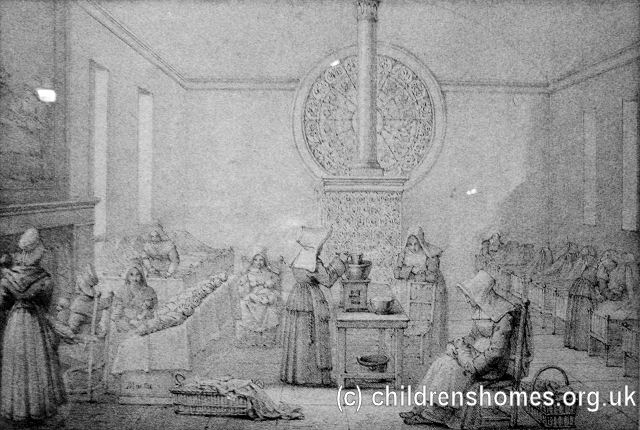
Foundlings and their nurses, Paris, date unknown.
In 1670, La Couche became l'Hôpital des Enfants-Trouvés (foundling hospital), linked to the city's Hôpital Général. In 1672, it acquired la Maison de la Marguerite, located on Rue Neuve-Notre-Dame, on the Île de la Cité. The existing property was demolished and replaced by a new three-storey building, with a chapel on its ground floor.
In 1680, l'Hôpital des Enfants-Dieu (l'Hôpital des Enfants-Rouges) was merged with the Couche, although the former continued in operation under its own name until 1772. In 1674, an additional property was purchased from the city's Hotel de Dieu. It was located on the Rue du Faubourg-Saint-Antoine and used to house children over three years of age.
During and after the French Revolution (1789-99), major changes took place in how foundlings, abandoned or orphan children were treated. At the heart of this was the principle that all such children should be the responsibility of the state, whose duty was to ensure that they became healthy and useful citizens, for example by training them for military or agricultural employment, or to work in the colonies. All the hospitals and hospices in France were required to take in these children, with the state (subsequently each of France's Departments) covering the cost of their maintenance. All 'hospitals' that received abandoned children were thereafter to be called 'hospices'. Free maternity hospices were set up across the country where mothers, after giving birth, could surrender (or 'abandon') their child to the state. Each hospice was also to be equipped with a tour — a cylindrical, rotating wooden box, set in a wall of the building, where an infant could be left anonymously — a facility that existed until the 1860s.
From 1814, the former convent of the Prêtres de l'Oratoire, at 74 Rue d'Enfer, was the city's main institution for receiving foundlings and became known as l'Hospice des Enfants-Trouvés.

Administrative section of Hospice des Enfants Assistés, Rue d'Enfer, Paris, date unknown.

Frontage of Hospice des Enfants Assistés from the south, Rue d'Enfer, Paris, early 1900s.
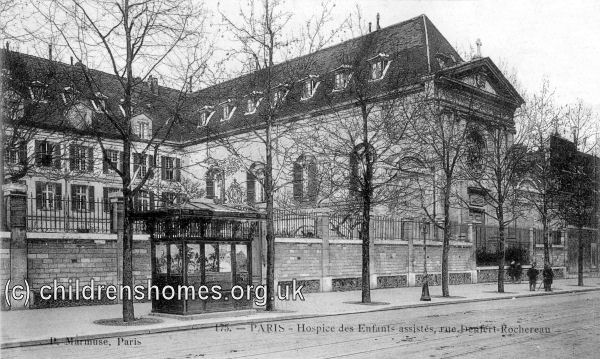
Hospice des Enfants Assistés from the south, Rue d'Enfer, Paris, date unknown.
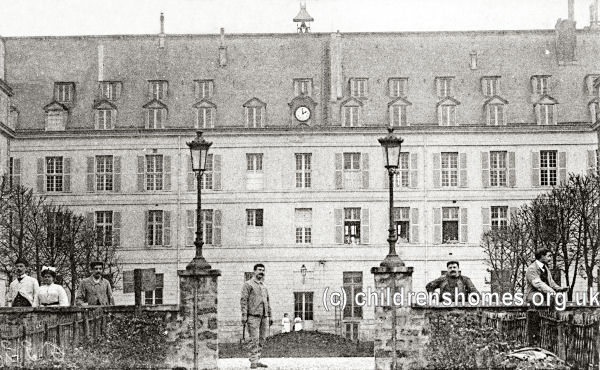
Main building of Hospice des Enfants Assistés, Rue d'Enfer, Paris, early 1900s. © Peter Higginbotham
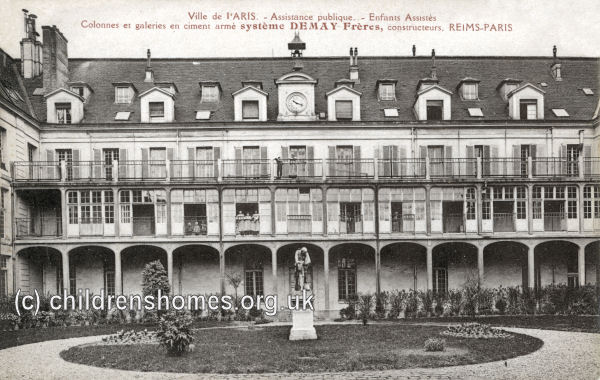
Main building of Hospice des Enfants Assistés, Rue d'Enfer, Paris, early 1900s. © Peter Higginbotham
Further accommodation was provided at the former abbey of Port Royal, in the Rue de la Bourbe. In 1838, part of the Rue d'Enfer site also became home to l'Hospice des Orphelins, to which children were transferred from the Hospice des Enfants-Trouvés after reaching the age of two years. Both establishments were run by the Sisters of St Vincent de Paul.
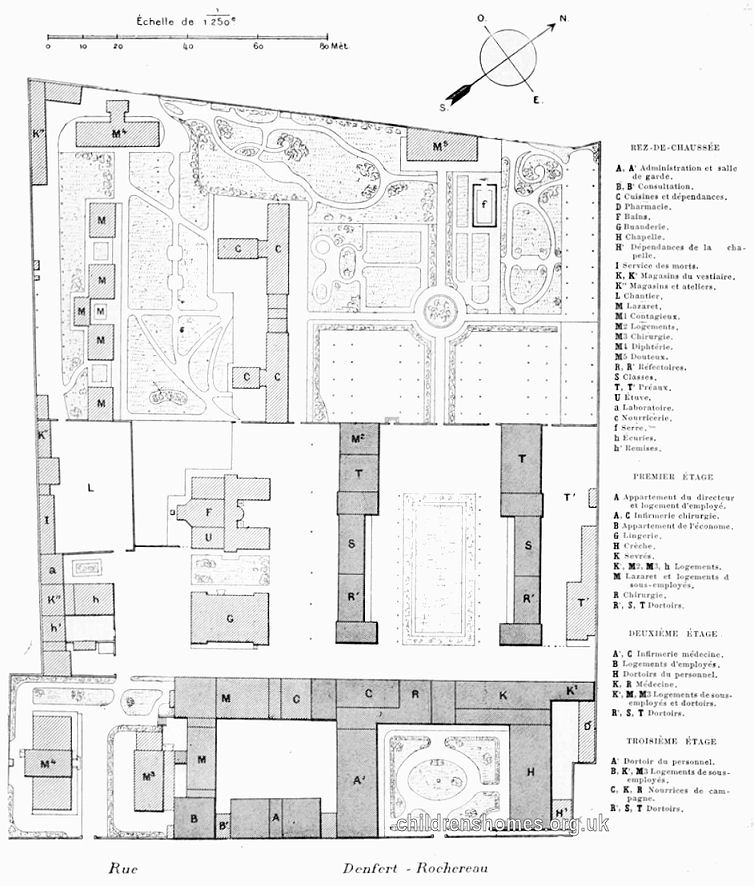
Plan of Assistés, Rue d'Enfer, Paris, 1903. © Peter Higginbotham

Nurses and babies, Assistés, Rue d'Enfer, Paris, early 1900s. © Peter Higginbotham

Boys and staff, Rue d'Enfer, Paris, early 1900s. © Peter Higginbotham
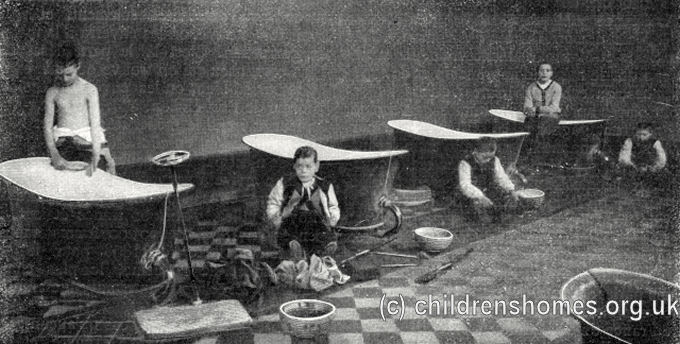
Hospice des Enfants Assistés, Rue d'Enfer, Paris, early 1900s. © Peter Higginbotham
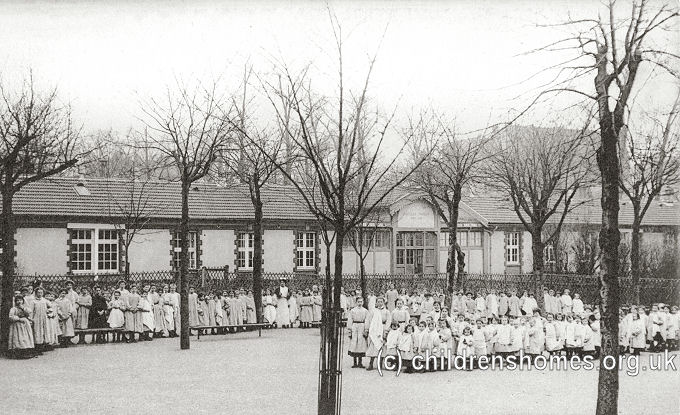
Playground, Hospice des Enfants Assistés, Rue d'Enfer, Paris, early 1900s. © Peter Higginbotham
From 1859 to 1906, foundlings, abandoned and orphaned children were known as 'enfants assistés', while a separate category of 'enfants moralement abandonnés' (morally abandoned children) was created in 1881 — children aged from 12 to 16 whose parents could not provide education, from a material or moral point of view; from 1907, these different categories all became 'pupilles de l'assistance' (wards of assistance), then 'de l'État') of the state.
The Hospice des Enfants Assistés had annexes at Thiais and Antony, with another being opened in 1893 by at Châtillon-sous-Bagneux.
Children did not stay at the central Hospice for any length of time. Some moved on to one of the city administration's assisted children's schools, the main ones being the school of printing and cabinet making at Alembert, the Le Nôtre school of horticulture, and the domestic training school at Yzeure.
The Rue d'Enfer site (now Avenue Denfert-Rochereau Avenue) is now occupied by the St Vincent de Paul Hospital.
Records
Note: many repositories impose a closure period of up to 100 years for records identifying individuals. Before travelling a long distance, always check that the records you want to consult will be available.
- Archives de Paris, 18 Boulevard Sérurier, 75019, Paris. Has extensive records for the city's foundling, abandoned and orphan children from 1639 onwards — there is a useful introductory page.
Bibliography
- Dinan, Susan E. Women and Poor Relief in Seventeenth-Century France: The Early History of the Daughters of Charity (2017, Routledge)
- Fuchs, Rachel Abandoned Children: Foundlings and Child Welfare in Nineteenth-Century France (1984, State University of New York)
Links
- None identified at present.
Except where indicated, this page () © Peter Higginbotham. Contents may not be reproduced without permission.


